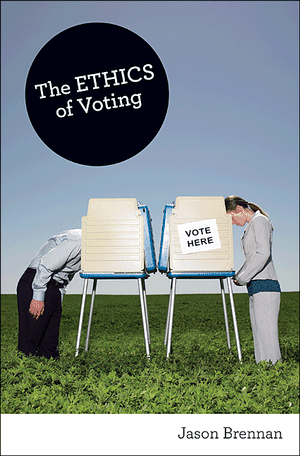I wonder how many successful men suckers went home with their fists after buying this prosecutrix drinks: A Philadelphia assistant district attorney was yanked from prosecuting two men accused of attempting to murder an alleged drug dealer after authorities discovered she had struck up a romance with the victim, the Daily News has learned. "We identified that there was a conflict of interest in the case, and we immediately notified the [state] Attorney General's Office, and they took over the case," said Tasha Jamerson, director of communications for District Attorney Seth Williams. Jamerson angrily refused to disclose the nature of the conflict. She said the D.A.'s office does not comment on such matters. The prosecutor, Jennifer Mitrick, 30, did not respond to a Daily News message left on her office phone.
Even Prosecutors Love Bad Boys
from Crime & Federalism
Why Buying a Hamburger Might Be the Organizing Tool of the Future
| Friendly Toast |
This account of life in Special Management Unit at SCI-Fayette in Pennsylvania comes to us via the Human Rights Coalition, a Philadelphia-based prison reform and social justice organization. As HRC describes it: “The Special Management Unit, or SMU, is billed by the Pennsylvania Department of Corrections as a program designed to alter the behavior of prisoners who, in the langauge of prison administrators, are ‘unable to adjust successfully to a correctional settting.’ In practice this means that, as with other forms of solitary confinement, the SMU is used to isolate and punish prisoners who have angered prison officials.” The account begins with the prisoner’s arrival at Fayette...MORE Is the distinction between a contract and a grant fairly simple? Yes says the Commonwealth of Virginia Attorney General (Washington Post). Contracts are legal agreements between the State and nonprofits. Grants are, well, free money or otherwise known as public funding of charitable organizations. Contracts can be extensions of the public. Grants can not. So-what? For Virgina nonprofits, the so-what could have been huge losses but saavy and caring legislators and state agency heads have quickly rushed to save the safety-net nonprofits. The cultural institutions do not appear so fortunate (although I would just create a nonprofit who would be the contractor with the State and then sub out grants). But isn't this situation really one more wake-up call for nonprofit boards to regularly have the sustainability converstation to be sure not to be dependent on any one source of income? ----------------------------------------------------------------------------- Five years after Sean Bell was killed in a hail of police gunfire, a community center named in his honor opened Friday in the Jamaica, Queens neighborhood where he grew up. The Sean Elijah Bell Community Center plans to offer tutoring and mentoring programs for kids, and GED and job training programs for adults starting next month. The center was funded by a U.S. Department of Housing and Urban Development grant and hopes to become an after-school haven for local youth, aiming to serve between 2,000 and 5,000 people a year. "Someone was taken away from us and we want to try to save some other people," Bell's father William Bell told The New York Daily News. "There's so many things that could be done in our neighborhood." Bell, who would have turned 28 last week, was leaving his bachelor party the night before his wedding on November 26, 2006, when a team of plainclothes and undercover NYPD officers said they incorrectly heard him and his friends refer to a gun in their possession. The officers then fired 50 bullets at Bell's car, killing him and injuring two of his friends. The incident caused national outcry, criticism, and protests by civil rights activists. Three of the five detectives who shot Bell and his friends faced trial but were acquitted in 2008. Last year, New York City agreed to pay Bell's family and friends a total of $7 million in a lawsuit settlement. ----------------------------------------------------------------------------- From the Just Seeds Artists' Cooperative 1. The U.S. has the largest incarcerated population in the world. In 2007, over two million prisoners were held in federal, state and local correction institutions; of these 203,100 were women. 2. The percentage of women has more than doubled – it is now 9%; and this is the highest percentage in the world. 3. In 1977-2007 the U.S. female prison population grew by 800%; and the annual growth has doubled that of men for some time. 4. The US also has the highest incarceration rate in the world. In 2008, it was around 900 per 100,000 for men, and 62 for women. 5. Racial and ethnic factors are significant, too. The rate for black women in the US is 149 per 100,000 compared to 75 for Hispanic women, and 50 for white women. Even in Massachusetts, a state with a low incarceration rate of 13 per 100,000, this trend continues. Between 1977-2007 the female prison population grew by almost 400%, with an average annual rate of increase of 8.7% per year. These numbers belie harsh realities for incarcerated women and girls...MORE
about Open Courts, a live streaming of court proceedings out of the Mass. Supreme Court).There is a restaurant in Cambridge, Massachusetts called “The Friendly Toast.” It serves standard diner food with a bit of colorful flare (think: two eggs over easy with hash browns, amongst inflated Barbie dolls, bright green walls, and 1957 kitchen furniture). What makes the restaurant truly unique, however, is that its next hire will be somebody with a criminal record. Why? Because its customers want it that way. The Friendly Toast agreed to hire a formerly incarcerated person if its customers purchased $1,000 in gift certificates. With some organizing help from the Boston Workers Alliance and Haily House, the customers did just that. This means that the next opening goes to somebody who can do the job and who has a criminal record. The implications for that person and his family are profound: a steady income, membership in a positive community, a structured environment for recalibration to freedom, and the dignity that comes from a day’s work. For The Friendly Toast, the benefits are also clear: a dedicated employee with training from a local non-profit and supervision from the state probation system, the ensuing loyalty of hungry customers who care about the practices of the businesses they patronize, and the positive brand value that comes from doing a good deed....MOREVoices from Solitary: “An Insane Asylum Disguised As an SMU”
Nonprofit Financing: Grant or ContractSean Bell Community Center Opens in New York
Justices Order California to Shed 30,000 Prisoners
from NYT > Home Page
Women in Prison and The “Myth of Small Numbers”
I came across a short piece by Erika Kates about women in prison. It reminded me of just how invisible women in prison continue to be in society. I have written often about the plight of women and girls in prison on this blog. Erika Kates offers some useful statistics to provide context for this issue:





































